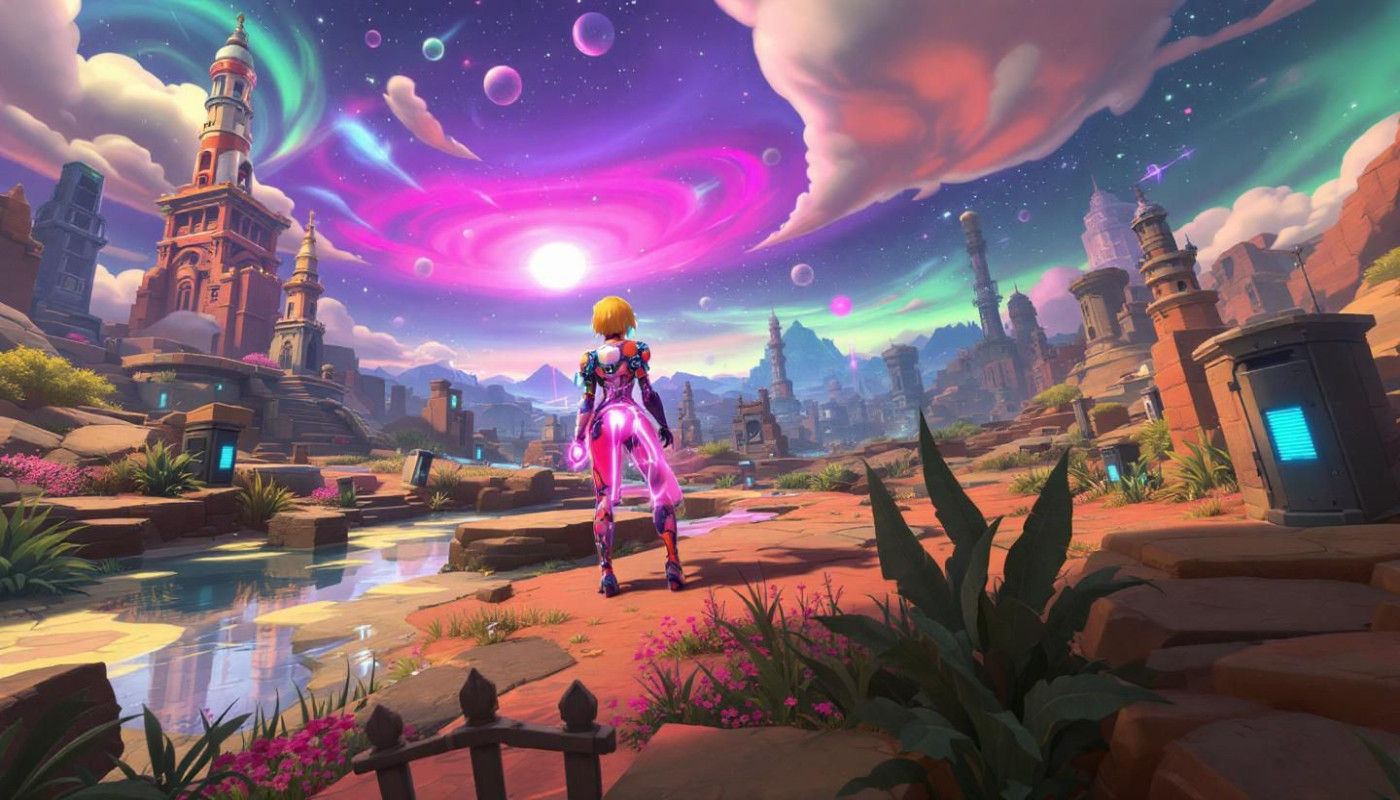Table of contents
The digital world of gaming thrives on more than vivid graphics and captivating storylines. Central to a truly immersive experience are the mechanics that shape how players interact with a game. Delve deeper to uncover how thoughtfully crafted mechanics not only sustain interest but also inspire players to return again and again.
Understanding core game mechanics
Core mechanics are the foundation of game development, acting as the primary systems that facilitate player interaction and shape the overall engagement experience. These mechanics define how players interact with the virtual world, establish the rules of play, and set the expectations for challenge and progression. Mastery over core mechanics enables developers to craft experiences that keep players invested, as well-structured mechanics generate satisfying feedback loops that reward skillful play, leading to a deeper sense of accomplishment and motivation. Effective feedback loops not only drive continued participation but also enhance replayability, as players return to refine their strategies and explore new possibilities within the established systems.
From a design perspective, the intricate relationship between core mechanics and player engagement highlights the necessity of thoughtful iteration and balance. In game development, it is vital to ensure that mechanics remain intuitive while offering layers of depth to sustain long-term interest. When core mechanics align seamlessly with other design elements, they foster a sense of agency and empowerment, encouraging players to experiment, adapt, and immerse themselves in the game world. As a result, meaningful player interaction is achieved, and the potential for replayability increases, laying the groundwork for a loyal community and enduring success in a competitive industry.
Balancing challenge and reward
In the domain of game design, achieving harmony between challenge and reward is a driving force behind player motivation and long-term satisfaction. A well-calibrated reward system encourages players to engage deeply with gameplay, as each challenge presents an opportunity for meaningful accomplishment. An optimal risk-reward ratio ensures that the perceived difficulty of tasks aligns with the value of rewards received, fostering a sense of achievement rather than frustration. When this equilibrium is disturbed—such as through excessive challenge without adequate compensation, or disproportionately generous rewards for minimal effort—player satisfaction often declines, leading to disengagement or diminished interest.
The best practices for maintaining this synergy in game design revolve around dynamic difficulty adjustment, frequent feedback, and tiered incentives. Developers should continuously analyze player behavior to fine-tune these systems, ensuring challenges remain stimulating but not discouraging. Integrating scalable difficulty levels allows individuals to tailor their experience and keeps both novices and veterans invested. A progressive reward system that escalates alongside the complexity of challenges sustains an upward trajectory of motivation, making each milestone feel deserved and reinforcing continued play.
Moreover, leveraging data analytics and iterative testing is invaluable for refining challenge and reward mechanics. Monitoring player retention rates and satisfaction surveys can highlight pain points or imbalances in the risk-reward ratio. By prioritizing transparent communication of objectives and rewards, developers build trust and anticipation, which amplifies player motivation. Ultimately, a well-balanced interplay between challenge and reward is the cornerstone of engaging, enduring game experiences that captivate and satisfy diverse audiences.
Role of progression systems
Progression systems are a foundational element in maintaining player interest, offering structured pathways that encourage continuous engagement within a game environment. These systems can range from simple leveling up mechanics to complex trees of unlockable skills, achievements, and game rewards. By integrating a well-designed progression system, developers tap into the psychological impact of goal-setting and accomplishment, thus stimulating intrinsic motivation. This heightened motivation drives players to persistently seek out new challenges, invest more time, and deepen their connection to the game world.
There are various types of progression systems used to enhance player retention. Linear progression often follows a straightforward path, where players advance by accumulating experience points and leveling up, unlocking incremental game rewards such as new equipment or story content. Branching systems, in contrast, offer players choices in how they develop their abilities or approach objectives, fostering a sense of agency and ownership. Some games implement meta-progression, where accomplishments carry over across multiple sessions, providing long-term incentives. Each type leverages psychological triggers—such as anticipation, reward anticipation, and mastery—to sustain engagement over extended periods.
The psychological impact of progression systems is particularly influential in fostering ongoing player retention. The anticipation of new rewards and abilities stimulates dopamine release, reinforcing play sessions and making the pursuit itself rewarding. Intrinsic motivation flourishes when players perceive their progress as meaningful and aligned with personal goals, rather than being solely driven by extrinsic rewards. By carefully calibrating progression systems to balance challenge, reward, and a sense of accomplishment, developers can create experiences that maintain player interest and encourage lasting participation in their games.
Social mechanics in gaming
Social mechanics are fundamental to shaping the landscape of modern games, directly influencing community engagement, retention, and overall player satisfaction. Features such as cooperative gameplay and competitive modes foster diverse types of social interaction, enabling players to connect in real time, collaborate to achieve shared goals, or challenge one another in multiplayer environments. Community events act as catalysts, drawing players together and encouraging collective participation, often extending the life of a game beyond its core content. These mechanics not only enhance the moment-to-moment experience but also nurture the metagame, as players strategize, form alliances, and develop reputations within their gaming communities.
Cooperative gameplay is particularly valuable for its ability to create bonds among players, requiring communication, trust, and coordinated effort. In contrast, competitive multiplayer modes tap into motivations for mastery, status, and personal improvement, often driving players to refine their skills and engage with others in a structured environment. The interplay of these features forms the backbone of social mechanics in gaming, heightening engagement through meaningful social interaction and ongoing community involvement. As players participate in these systems, their actions contribute to a dynamic ecosystem, where emergent behaviors and community-driven narratives flourish.
Games that excel in leveraging social mechanics often provide robust tools for cooperation and competition, as well as regular community events that reward engagement and creativity. For example, platforms like https://rabbit-road.game/ incorporate multiplayer elements and activities that encourage players to interact, collaborate, and compete, all within a persistent and evolving community space. This approach to design not only sustains player interest but also promotes long-term investment, as the social fabric of the game becomes a key source of enjoyment and motivation for individuals and groups alike.
Innovating for deeper engagement
In the arena of game innovation, developers have increasingly embraced innovative mechanics to elevate player engagement far beyond traditional experiences. Adaptive difficulty, a method where game challenges are dynamically altered based on the player's skill level and behavior, stands at the forefront of these advances. Through dynamic balancing, titles such as Resident Evil 4 and Left 4 Dead have successfully maintained challenge and excitement for a diverse audience, with in-game metrics reflecting increased session lengths and higher player retention rates. This approach allows games to respond fluidly to the player's proficiency, eliminating frustration for newcomers while ensuring mastery remains rewarding for veterans.
Procedural generation has also emerged as a transformative force in deepening engagement. This technique enables the automatic creation of game content, ensuring that every playthrough feels fresh and unpredictable. Notable examples include roguelike games like Hades and Spelunky, which utilize procedural generation to deliver unique environments, enemy placements, and item distributions. Data from these titles demonstrates that players spend significantly more time exploring and replaying procedurally generated worlds, as the variability fosters curiosity and sustained interest.
Another layer of game innovation comes from mechanics that react to player choices and playstyle, further personalizing the journey. Games such as The Legend of Zelda: Breath of the Wild integrate innovative mechanics that encourage creative problem-solving, rewarding experimentation with emergent solutions. Metrics from player analytics confirm that players invested in title-specific systems with high interactivity report greater immersion and satisfaction, driving word-of-mouth recommendations and community engagement.
Integrating these approaches not only enhances player engagement but has also become a benchmark for commercial and critical success. Studios that prioritize innovative mechanics—particularly those leveraging adaptive difficulty, procedural generation, and dynamic balancing—consistently report higher active user numbers and longer player lifespans. In the evolving landscape of game design, the adoption of these systems is pivotal in meeting the expectations of an adult audience seeking not just entertainment, but meaningful, memorable experiences.
Similar articles































